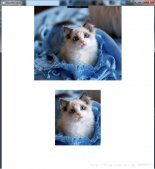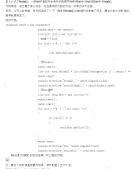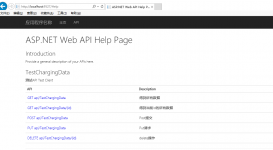在 C# 中,算术运算符,有以下类型
- 算术运算符
- 关系运算符
- 逻辑运算符
- 位运算符
- 赋值运算符
- 其他运算符
这些运算符根据参数的多少,可以分作一元运算符、二元运算符、三元运算符。本文将围绕这些运算符,演示如何使用表达式树进行操作。
对于一元运算符和二元运算符的 Expression 的子类型如下:
|
1
2
|
UnaryExpression; //一元运算表达式BinaryExpression; //二元运算表达式 |
一,算术运算符
| 运算符 | 描述 |
|---|---|
| + | 把两个操作数相加 |
| - | 从第一个操作数中减去第二个操作数 |
| * | 把两个操作数相乘 |
| / | 分子除以分母 |
| % | 取模运算符,整除后的余数 |
| ++ | 自增运算符,整数值增加 1 |
| -- | 自减运算符,整数值减少 1 |
+ 与 Add()
正常代码
|
1
2
3
4
5
6
|
int a;int b;a = 100;b = 200;var ab = a + b;Console.WriteLine(ab); |
使用表达式树构建
|
1
2
3
4
5
6
7
8
9
10
11
12
13
|
ParameterExpression a = Expression.Parameter(typeof(int), "a");ParameterExpression b = Expression.Parameter(typeof(int), "b");// ab = a + bBinaryExpression ab = Expression.Add(a, b);// 打印 a + b 的值MethodCallExpression method = Expression.Call(null, typeof(Console).GetMethod("WriteLine", new Type[] { typeof(int) }), ab);Expression<Action<int, int>> lambda = Expression.Lambda<Action<int, int>>(method, a, b);lambda.Compile()(100, 200);Console.ReadKey(); |
如果想复杂一些,使用 块 来执行:
|
1
2
3
4
5
6
7
8
9
10
11
12
13
14
15
16
17
18
|
ParameterExpression a = Expression.Parameter(typeof(int), "a");ParameterExpression b = Expression.Parameter(typeof(int), "b");// 别忘记了赋值BinaryExpression aa = Expression.Assign(a, Expression.Constant(100, typeof(int)));BinaryExpression bb = Expression.Assign(b, Expression.Constant(200, typeof(int)));// ab = a + bBinaryExpression ab = Expression.Add(a, b);// 打印 a + b 的值MethodCallExpression method = Expression.Call(null, typeof(Console).GetMethod("WriteLine", new Type[] { typeof(int) }), ab);// 以块的形式执行代码,相当于{ }// 不需要纠结这里,后面会有详细说明,重点是上面var call = Expression.Block(new ParameterExpression[] { a, b }, aa, bb, method);Expression<Action> lambda = Expression.Lambda<Action>(call);lambda.Compile()(); |
上面两个示例,是使用表达式树计算结果,然后还是使用表达式树打印结果。
前者依赖外界传入参数值,赋予 a、b,后者则全部使用表达式树赋值和运算。
那么,如何通过表达式树执行运算,获取执行结果呢?
|
1
2
3
4
5
6
7
8
9
10
11
|
ParameterExpression a = Expression.Parameter(typeof(int), "a");ParameterExpression b = Expression.Parameter(typeof(int), "b");// ab = a + bBinaryExpression ab = Expression.Add(a, b);Expression<Func<int, int, int>> lambda = Expression.Lambda<Func<int, int, int>>(ab, a, b);int result = lambda.Compile()(100, 200);Console.WriteLine(result);Console.ReadKey(); |
这些区别在于如何编写 Expression.Lambda()。
另外,使用 AddChecked() 可以检查操作溢出。
- 与 Subtract()
与加法一致,此处不再赘述,SubtractChecked() 可以检查溢出。
a - b ,结果是 100 。
|
1
2
3
4
5
6
7
8
9
10
|
ParameterExpression a = Expression.Parameter(typeof(int), "a");ParameterExpression b = Expression.Parameter(typeof(int), "b");// ab = a - bBinaryExpression ab = Expression.Subtract(a, b);Expression<Func<int, int, int>> lambda = Expression.Lambda<Func<int, int, int>>(ab, a, b);int result = lambda.Compile()(200, 100);Console.WriteLine(result); |
乘除、取模
乘法
|
1
2
3
|
// ab = a * b BinaryExpression ab = Expression.Multiply(a, b);// ab = 20000 |
除法
|
1
2
3
|
// ab = a / b BinaryExpression ab = Expression.Divide(a, b);// ab = 2 |
取模(%)
|
1
2
3
4
5
6
7
8
9
10
11
|
ParameterExpression a = Expression.Parameter(typeof(int), "a"); ParameterExpression b = Expression.Parameter(typeof(int), "b"); // ab = a % b BinaryExpression ab = Expression.Modulo(a, b); Expression<Func<int, int, int>> lambda = Expression.Lambda<Func<int, int, int>>(ab, a, b); int result = lambda.Compile()(200, 150);// ab = 50 Console.WriteLine(result); Console.ReadKey(); |
自增自减
自增自减有两种模型,一种是 x++ 或 x--,另一种是 ++x 或 --x。
他们都是属于 UnaryExpression 类型。
| 算术运算符 | 表达式树 | 说明 |
|---|---|---|
| x++ | Expression.PostIncrementAssign() | 后置 |
| x-- | Expression.PostDecrementAssign() | 后置 |
| ++x | Expression.PreIncrementAssign() | 前置 |
| --x | Expression.PreDecrementAssign() | 前置 |
巧记:Post 后置, Pre 前置;Increment 是加,Decrement是减;Assign与赋值有关(后面会说到);
x++ 与 x-- 的使用
|
1
2
3
4
5
6
|
int a = 10;int b = 10;a++;b--;Console.WriteLine(a);Console.WriteLine(b); |
|
1
2
3
4
5
6
7
8
9
10
11
12
13
14
15
16
17
18
19
20
21
22
23
24
25
26
27
28
29
30
31
32
33
|
// int a,b;ParameterExpression a = Expression.Parameter(typeof(int), "a");ParameterExpression b = Expression.Parameter(typeof(int), "b");// a = 10,b = 10;BinaryExpression setA = Expression.Assign(a, Expression.Constant(10));BinaryExpression setB = Expression.Assign(b, Expression.Constant(10));// a++UnaryExpression aa = Expression.PostIncrementAssign(a);// b--UnaryExpression bb = Expression.PostDecrementAssign(b);//Console.WriteLine(a);//Console.WriteLine(b);MethodCallExpression callA = Expression.Call(null, typeof(Console).GetMethod("WriteLine", new Type[] { typeof(int) }), a);MethodCallExpression callB = Expression.Call(null, typeof(Console).GetMethod("WriteLine", new Type[] { typeof(int) }), b);BlockExpression block = Expression.Block( new ParameterExpression[] { a, b }, setA, setB, aa, bb, callA, callB );Expression<Action> lambda = Expression.Lambda<Action>(block);lambda.Compile()();Console.ReadKey(); |
如果想把参数从外面传入,设置 a,b
|
1
2
3
4
5
6
7
8
9
10
11
12
13
14
15
16
17
18
19
20
21
22
23
24
25
|
// int a,b;ParameterExpression a = Expression.Variable(typeof(int), "a");ParameterExpression b = Expression.Variable(typeof(int), "b");// a++UnaryExpression aa = Expression.PostIncrementAssign(a);// b--UnaryExpression bb = Expression.PostDecrementAssign(b);//Console.WriteLine(a);//Console.WriteLine(b);MethodCallExpression callA = Expression.Call(null, typeof(Console).GetMethod("WriteLine", new Type[] { typeof(int) }), a);MethodCallExpression callB = Expression.Call(null, typeof(Console).GetMethod("WriteLine", new Type[] { typeof(int) }), b);BlockExpression block = Expression.Block( aa, bb, callA, callB );Expression<Action<int, int>> lambda = Expression.Lambda<Action<int, int>>(block, a, b);lambda.Compile()(10, 10);Console.ReadKey(); |
生成的表达式树如下
|
1
2
3
4
5
6
7
8
9
10
|
.Lambda #Lambda1<System.Action`2[System.Int32,System.Int32]>( System.Int32 $a, System.Int32 $b) { .Block() { $a++; $b--; .Call System.Console.WriteLine($a); .Call System.Console.WriteLine($b) }} |
为了理解一下 Expression.Block(),可以在这里学习一下(后面会说到 Block())。
|
1
2
3
4
5
6
7
8
9
10
11
12
13
14
15
16
17
18
19
20
21
22
23
24
25
26
27
28
29
30
31
32
|
// int a,b;ParameterExpression a = Expression.Parameter(typeof(int), "a");ParameterExpression b = Expression.Parameter(typeof(int), "b");ParameterExpression c = Expression.Variable(typeof(int), "c");BinaryExpression SetA = Expression.Assign(a, c);BinaryExpression SetB = Expression.Assign(b, c);// a++UnaryExpression aa = Expression.PostIncrementAssign(a);// b--UnaryExpression bb = Expression.PostDecrementAssign(b);//Console.WriteLine(a);//Console.WriteLine(b);MethodCallExpression callA = Expression.Call(null, typeof(Console).GetMethod("WriteLine", new Type[] { typeof(int) }), a);MethodCallExpression callB = Expression.Call(null, typeof(Console).GetMethod("WriteLine", new Type[] { typeof(int) }), b);BlockExpression block = Expression.Block( new ParameterExpression[] { a, b }, SetA, SetB, aa, bb, callA, callB );Expression<Action<int>> lambda = Expression.Lambda<Action<int>>(block, c);lambda.Compile()(10);Console.ReadKey(); |
为什么这里要多加一个 c 呢?我们来看看生成的表达式树
|
1
2
3
4
5
6
7
8
9
10
11
12
|
.Lambda #Lambda1<System.Action`1[System.Int32]>(System.Int32 $c) { .Block( System.Int32 $a, System.Int32 $b) { $a = $c; $b = $c; $a++; $b--; .Call System.Console.WriteLine($a); .Call System.Console.WriteLine($b) }} |
观察一下下面代码生成的表达式树
|
1
2
3
4
5
6
7
8
9
10
11
12
13
14
15
16
17
18
19
20
21
22
23
24
25
26
|
// int a,b;ParameterExpression a = Expression.Parameter(typeof(int), "a");ParameterExpression b = Expression.Parameter(typeof(int), "b");// a++UnaryExpression aa = Expression.PostIncrementAssign(a);// b--UnaryExpression bb = Expression.PostDecrementAssign(b);//Console.WriteLine(a);//Console.WriteLine(b);MethodCallExpression callA = Expression.Call(null, typeof(Console).GetMethod("WriteLine", new Type[] { typeof(int) }), a);MethodCallExpression callB = Expression.Call(null, typeof(Console).GetMethod("WriteLine", new Type[] { typeof(int) }), b);BlockExpression block = Expression.Block( new ParameterExpression[] { a, b }, aa, bb, callA, callB );Expression<Action<int, int>> lambda = Expression.Lambda<Action<int, int>>(block, a, b);lambda.Compile()(10, 10);Console.ReadKey(); |
|
1
2
3
4
5
6
7
8
9
10
11
12
|
.Lambda #Lambda1<System.Action`2[System.Int32,System.Int32]>( System.Int32 $a, System.Int32 $b) { .Block( System.Int32 $a, System.Int32 $b) { $a++; $b--; .Call System.Console.WriteLine($a); .Call System.Console.WriteLine($b) }} |
关于前置的自增自减,按照上面示例编写即可,但是需要注意的是, ++x 和 --x ,是“先运算后增/自减”。
二,关系运算符
==、!=、>、<、>=、<=
C# 中的关系运算符如下
| 运算符 | 描述 |
|---|---|
| == | 检查两个操作数的值是否相等,如果相等则条件为真。 |
| != | 检查两个操作数的值是否相等,如果不相等则条件为真。 |
| > | 检查左操作数的值是否大于右操作数的值,如果是则条件为真。 |
| < | 检查左操作数的值是否小于右操作数的值,如果是则条件为真。 |
| >= | 检查左操作数的值是否大于或等于右操作数的值,如果是则条件为真。 |
| <= | 检查左操作数的值是否小于或等于右操作数的值,如果是则条件为真。 |
== 表示相等比较,如果是值类型和 string 类型,则比较值是否相同;如果是引用类型,则比较引用的地址是否相等。
其它的关系运算符则是仅比较值类型的大小。
实例代码
|
1
2
3
4
5
6
7
8
9
10
11
12
13
14
15
16
17
18
19
20
21
22
23
24
|
int a = 21;int b = 10;Console.Write("a == b:");Console.WriteLine(a == b);Console.Write("a < b :");Console.WriteLine(a < b);Console.Write("a > b :");Console.WriteLine(a > b);// 改变 a 和 b 的值 a = 5;b = 20;Console.Write("a <= b:");Console.WriteLine(a <= b);Console.Write("a >= b:");Console.WriteLine(b >= a);Console.ReadKey(); |
使用表达式树实现
|
1
2
3
4
5
6
7
8
9
10
11
12
13
14
15
16
17
18
19
20
21
22
23
24
25
26
27
28
29
30
31
32
33
34
35
36
37
38
39
40
41
42
43
44
45
46
47
48
49
50
51
52
53
54
55
56
57
58
59
60
61
62
63
64
65
66
67
68
69
70
71
72
73
74
75
76
77
78
79
80
|
// int a,b;ParameterExpression a = Expression.Parameter(typeof(int), "a");ParameterExpression b = Expression.Parameter(typeof(int), "b");// a = 21,b = 10;BinaryExpression setA = Expression.Assign(a, Expression.Constant(21));BinaryExpression setB = Expression.Assign(b, Expression.Constant(20));// Console.Write("a == b:");// Console.WriteLine(a == b);MethodCallExpression call1 = Expression.Call(null, typeof(Console).GetMethod("Write", new Type[] { typeof(string) }), Expression.Constant("a == b:"));MethodCallExpression call11 = Expression.Call(null, typeof(Console).GetMethod("WriteLine", new Type[] { typeof(bool) }), Expression.Equal(a, b));// Console.Write("a < b :");// Console.WriteLine(a < b);MethodCallExpression call2 = Expression.Call(null, typeof(Console).GetMethod("Write", new Type[] { typeof(string) }), Expression.Constant("a < b :"));MethodCallExpression call22 = Expression.Call(null, typeof(Console).GetMethod("WriteLine", new Type[] { typeof(bool) }), Expression.LessThan(a, b));// Console.Write("a > b :");// Console.WriteLine(a > b);MethodCallExpression call3 = Expression.Call(null, typeof(Console).GetMethod("Write", new Type[] { typeof(string) }), Expression.Constant("a > b :"));MethodCallExpression call33 = Expression.Call(null, typeof(Console).GetMethod("WriteLine", new Type[] { typeof(bool) }), Expression.GreaterThan(a, b));// 改变 a 和 b 的值 // a = 5;// b = 20;BinaryExpression setAa = Expression.Assign(a, Expression.Constant(5));BinaryExpression setBb = Expression.Assign(b, Expression.Constant(20));// Console.Write("a <= b:");// Console.WriteLine(a <= b);MethodCallExpression call4 = Expression.Call(null, typeof(Console).GetMethod("Write", new Type[] { typeof(string) }), Expression.Constant("a <= b:"));MethodCallExpression call44 = Expression.Call(null, typeof(Console).GetMethod("WriteLine", new Type[] { typeof(bool) }), Expression.LessThanOrEqual(a, b));// Console.Write("a >= b:");// Console.WriteLine(b >= a);MethodCallExpression call5 = Expression.Call(null, typeof(Console).GetMethod("Write", new Type[] { typeof(string) }), Expression.Constant("a >= b:"));MethodCallExpression call55 = Expression.Call(null, typeof(Console).GetMethod("WriteLine", new Type[] { typeof(bool) }), Expression.GreaterThanOrEqual(a, b));BlockExpression block = Expression.Block(new ParameterExpression[] { a, b }, setA, setB, call1, call11, call2, call22, call3, call33, setAa, setBb, call4, call44, call5, call55 );Expression<Action> lambda = Expression.Lambda<Action>(block);lambda.Compile()();Console.ReadKey(); |
生成的表达式树如下
|
1
2
3
4
5
6
7
8
9
10
11
12
13
14
15
16
17
18
19
20
|
.Lambda #Lambda1<System.Action>() { .Block( System.Int32 $a, System.Int32 $b) { $a = 21; $b = 20; .Call System.Console.Write("a == b:"); .Call System.Console.WriteLine($a == $b); .Call System.Console.Write("a < b :"); .Call System.Console.WriteLine($a < $b); .Call System.Console.Write("a > b :"); .Call System.Console.WriteLine($a > $b); $a = 5; $b = 20; .Call System.Console.Write("a <= b:"); .Call System.Console.WriteLine($a <= $b); .Call System.Console.Write("a >= b:"); .Call System.Console.WriteLine($a >= $b) }} |
三,逻辑运算符
&&、||、!
| 运算符 | 描述 |
|---|---|
| && | 称为逻辑与运算符。如果两个操作数都非零,则条件为真。 |
| || | 称为逻辑或运算符。如果两个操作数中有任意一个非零,则条件为真。 |
| ! | 称为逻辑非运算符。用来逆转操作数的逻辑状态。如果条件为真则逻辑非运算符将使其为假。 |
逻辑运算符的运行,结果是 true 或 false。
| 逻辑运算符 | 表达式树 |
|---|---|
| && | Expression.AndAlso() |
| || | Expression.OrElse() |
| ! | Expression.Not() |
|
1
2
3
4
5
6
7
8
9
10
11
12
|
int a = 10;int b = 11;Console.Write("[a == b && a > b]:");Console.WriteLine(a == b && a > b);Console.Write("[a > b || a == b]:");Console.WriteLine(a > b || a == b);Console.Write("[!(a == b)]:");Console.WriteLine(!(a == b));Console.ReadKey(); |
使用表达式树编写
|
1
2
3
4
5
6
7
8
9
10
11
12
13
14
15
16
17
18
19
20
21
22
23
24
25
26
27
28
29
30
31
32
33
34
35
36
37
38
39
40
41
42
43
44
45
46
47
48
49
|
//int a = 10;//int b = 11;ParameterExpression a = Expression.Parameter(typeof(int), "a");ParameterExpression b = Expression.Parameter(typeof(int), "b");BinaryExpression setA = Expression.Assign(a, Expression.Constant(10));BinaryExpression setB = Expression.Assign(b, Expression.Constant(11));//Console.Write("[a == b && a > b]:");//Console.WriteLine(a == b && a > b);MethodCallExpression call1 = Expression.Call(null, typeof(Console).GetMethod("Write", new Type[] { typeof(string) }), Expression.Constant("[a == b && a > b]:"));MethodCallExpression call2 = Expression.Call( null, typeof(Console).GetMethod("WriteLine", new Type[] { typeof(bool) }), Expression.AndAlso(Expression.Equal(a, b), Expression.GreaterThan(a, b)) );//Console.Write("[a > b || a == b]:");//Console.WriteLine(a > b || a == b);MethodCallExpression call3 = Expression.Call(null, typeof(Console).GetMethod("Write", new Type[] { typeof(string) }), Expression.Constant("[a > b || a == b]:"));MethodCallExpression call4 = Expression.Call( null, typeof(Console).GetMethod("WriteLine", new Type[] { typeof(bool) }), Expression.OrElse(Expression.Equal(a, b), Expression.GreaterThan(a, b)) );//Console.Write("[!(a == b)]:");//Console.WriteLine(!(a == b));MethodCallExpression call5 = Expression.Call(null, typeof(Console).GetMethod("Write", new Type[] { typeof(string) }), Expression.Constant("[!(a == b)]:"));MethodCallExpression call6 = Expression.Call( null, typeof(Console).GetMethod("WriteLine", new Type[] { typeof(bool) }), Expression.Not(Expression.Equal(a, b)) );BlockExpression block = Expression.Block( new ParameterExpression[] { a, b }, setA, setB, call1, call2, call3, call4, call5, call6 );Expression<Action> lambda = Expression.Lambda<Action>(block);lambda.Compile()();Console.ReadKey(); |
生成的表达式树如下
|
1
2
3
4
5
6
7
8
9
10
11
12
13
14
|
.Lambda #Lambda1<System.Action>() { .Block( System.Int32 $a, System.Int32 $b) { $a = 10; $b = 11; .Call System.Console.Write("[a == b && a > b]:"); .Call System.Console.WriteLine($a == $b && $a > $b); .Call System.Console.Write("[a > b || a == b]:"); .Call System.Console.WriteLine($a == $b || $a > $b); .Call System.Console.Write("[!(a == b)]:"); .Call System.Console.WriteLine(!($a == $b)) }} |
四,位运算符
&、|、^、~、<<、>>
| 运算符 | 描述 | 实例 |
|---|---|---|
| & | 如果同时存在于两个操作数中,二进制 AND 运算符复制一位到结果中。 | (A & B) 将得到 12,即为 0000 1100 |
| | | 如果存在于任一操作数中,二进制 OR 运算符复制一位到结果中。 | (A | B) 将得到 61,即为 0011 1101 |
| ^ | 如果存在于其中一个操作数中但不同时存在于两个操作数中,二进制异或运算符复制一位到结果中。 | (A ^ B) 将得到 49,即为 0011 0001 |
| ~ | 按位取反运算符是一元运算符,具有"翻转"位效果,即0变成1,1变成0,包括符号位。 | (~A ) 将得到 -61,即为 1100 0011,一个有符号二进制数的补码形式。 |
| << | 二进制左移运算符。左操作数的值向左移动右操作数指定的位数。 | A << 2 将得到 240,即为 1111 0000 |
| >> | 二进制右移运算符。左操作数的值向右移动右操作数指定的位数。 | A >> 2 将得到 15,即为 0000 1111 |
限于篇幅,就写示例了。
| 位运算符 | 表达式树 |
|---|---|
| & | Expression.Add(Expression left, Expression right) |
| | | Expression.Or(Expression left, Expression right) |
| ^ | Expression.ExclusiveOr(Expression expression) |
| ~ | Expression.OnesComplement( Expression expression) |
| << | Expression.LeftShift(Expression left, Expression right) |
| >> | Expression.RightShift(Expression left, Expression right) |
五,赋值运算符
| 运算符 | 描述 | 实例 |
|---|---|---|
| = | 简单的赋值运算符,把右边操作数的值赋给左边操作数 | C = A + B 将把 A + B 的值赋给 C |
| += | 加且赋值运算符,把右边操作数加上左边操作数的结果赋值给左边操作数 | C += A 相当于 C = C + A |
| -= | 减且赋值运算符,把左边操作数减去右边操作数的结果赋值给左边操作数 | C -= A 相当于 C = C - A |
| *= | 乘且赋值运算符,把右边操作数乘以左边操作数的结果赋值给左边操作数 | C *= A 相当于 C = C * A |
| /= | 除且赋值运算符,把左边操作数除以右边操作数的结果赋值给左边操作数 | C /= A 相当于 C = C / A |
| %= | 求模且赋值运算符,求两个操作数的模赋值给左边操作数 | C %= A 相当于 C = C % A |
| <<= | 左移且赋值运算符 | C <<= 2 等同于 C = C << 2 |
| >>= | 右移且赋值运算符 | C >>= 2 等同于 C = C >> 2 |
| &= | 按位与且赋值运算符 | C &= 2 等同于 C = C & 2 |
| ^= | 按位异或且赋值运算符 | C ^= 2 等同于 C = C ^ 2 |
| |= | 按位或且赋值运算符 | C |= 2 等同于 C = C | 2 |
限于篇幅,请自行领略... ...
| 运算符 | 表达式树 |
|---|---|
| = | Expression.Assign |
| += | Expression.AddAssign |
| -= | Expression.SubtractAssign |
| *= | Expression.MultiplyAssign |
| /= | Expression.DivideAssign |
| %= | Expression.ModuloAssign |
| <<= | Expression.LeftShiftAssign |
| >>= | Expression.RightShiftAssign |
| &= | Expression.AndAssign |
| ^= | Expression.ExclusiveOrAssign |
| |= | Expression.OrAssign |
^= ,注意有两种意思一种是位运算符的异或(ExclusiveOrAssign),一种是算术运算符的幂运算(PowerAssign)。
六,其他运算符
| 运算符 | 描述 | 实例 |
|---|---|---|
| sizeof() | 返回数据类型的大小。 | sizeof(int),将返回 4. |
| typeof() | 返回 class 的类型。 | typeof(StreamReader); |
| & | 返回变量的地址。 | &a; 将得到变量的实际地址。 |
| * | 变量的指针。 | *a; 将指向一个变量。 |
| ? : | 条件表达式 | 如果条件为真 ? 则为 X : 否则为 Y |
| is | 判断对象是否为某一类型。 | If( Ford is Car) // 检查 Ford 是否是 Car 类的一个对象。 |
| as | 强制转换,即使转换失败也不会抛出异常。 | Object obj = new StringReader("Hello"); StringReader r = obj as StringReader; |
到此这篇关于C#五类运算符使用表达式树进行操作的文章就介绍到这了。希望对大家的学习有所帮助,也希望大家多多支持服务器之家。
原文链接:https://www.cnblogs.com/whuanle/p/11545441.html















